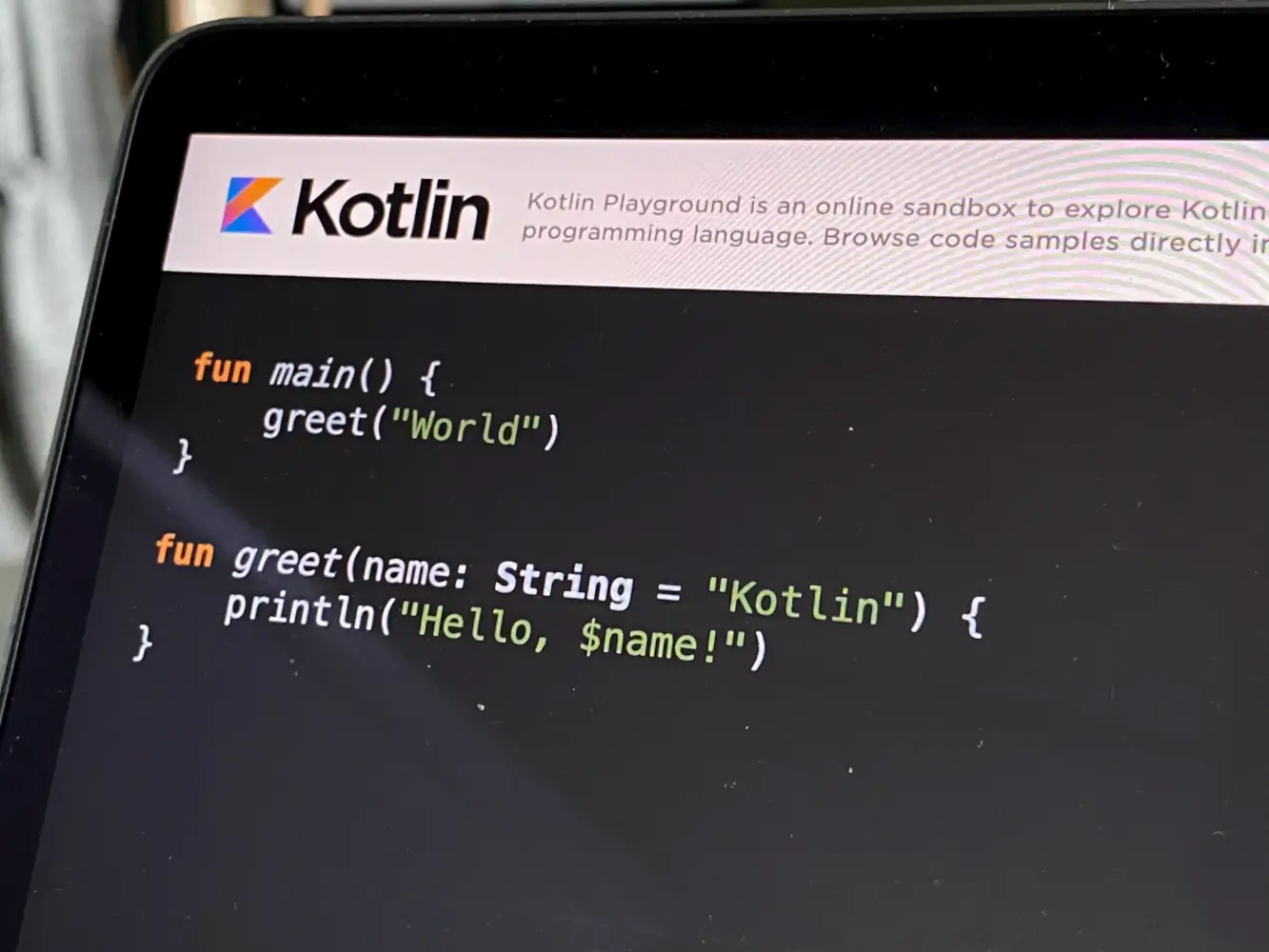About Kotlin and What Aspiring Software Engineers Need to Know
As a budding software engineer, it’s crucial for me to explore languages that can enhance my skills and open up new opportunities. One language that has really caught my eye lately is Kotlin. Developed by JetBrains, Kotlin is a sleek, modern, and robust programming language that operates on the Java Virtual Machine (JVM). Its smooth compatibility with Java makes it perfect for diving into Android app development and more.
Kotlin brings a host of features that simplify the coding process and improve productivity. Its null safety feature, for example, helps eliminate the notorious NullPointerExceptions, making it easier to write robust and reliable code. Additionally, Kotlin supports functional programming paradigms, extension functions, and smart casts, allowing developers to write more expressive and concise code.
Kotlin Features
Kotlin presents a wide array of features meticulously designed to streamline the coding process and significantly enhance productivity. Its robust null safety feature stands out as a prime example, effectively eradicating the notorious NullPointerExceptions and thereby fostering the development of exceptionally resilient and reliable codebases. Moreover, Kotlin’s embrace of functional programming paradigms, coupled with its support for extension functions and smart casts, not only empowers developers to write code that is remarkably expressive and concise but also encourages innovation and fosters a deeper understanding of modern programming principles.
Kotlin vs. Java: The Battle for Android Supremacy
In my journey through software development, picking the right programming language is crucial for the success of my project. Java, a long-standing pillar of the industry, has been a dominant language for decades, known for its reliability, portability, and extensive use across enterprise applications and Android development. However, the introduction of Kotlin in 2011 and its subsequent rise to prominence, especially after being endorsed by Google for Android development in 2017, has sparked a new debate among developers.
When I compare Java to Kotlin, it’s not just about checking out two programming languages. It’s more like seeing how they’ve changed to fit what we need in the industry. Kotlin, designed to interoperate fully with Java, offers solutions to many of Java’s pain points, such as verbosity, null pointer exceptions, and boilerplate code. By providing a more concise syntax, null safety, and a plethora of modern features, Kotlin aims to enhance productivity and improve developer experience.
This comparison is vital for developers, project managers, and organizations as they navigate the technological landscape. It helps in making informed decisions about adopting Kotlin for new projects or transitioning existing Java codebases to Kotlin, ensuring that the benefits align with the project’s needs and team’s expertise. The juxtaposition of Java and Kotlin highlights the strengths and limitations of each language, offering insights into how they can be utilized individually or in tandem to build robust, efficient, and maintainable applications.
The following table offers a side-by-side comparison of some key features and differences between Kotlin and Java, illustrating why this comparison is not only relevant but essential for those involved in software development today.
| Feature | Kotlin | Java |
|---|---|---|
| Syntax | Concise and more expressive. Allows for less boilerplate code. | More verbose compared to Kotlin. |
| Null Safety | Built-in null safety to prevent null pointer exceptions. | Requires manual null checks to prevent null pointer exceptions. |
| Extension Functions | Supports extension functions, allowing you to extend a class with new functionality. | Does not support extension functions. New functionality must be added through inheritance or decoration. |
| Coroutines for Asynchronous Programming | Native support for coroutines, facilitating asynchronous programming and more efficient handling of concurrency. | Uses callbacks and futures for asynchronous programming, which can be more cumbersome and error-prone. |
| Smart Casts | Features smart casts that handle redundant casting checks intelligently. | Requires explicit casting. |
| Default Arguments and Named Parameters | Supports default arguments and named parameters, reducing the need for overloaded functions. | Does not support default arguments or named parameters, often leading to a proliferation of overloaded methods. |
| Immutability | Encourages immutability with its ‘val’ keyword for declaring read-only properties. | Final is used to declare constants, but immutability is not as emphasized or enforced as in Kotlin. |
| Data Classes | Provides data classes, simplifying the creation of classes that primarily hold data. | Requires manual implementation of boilerplate code for data holding classes (e.g., getters, setters, equals, hashcode, toString). |
| Interoperability | Designed to be fully interoperable with Java, allowing the use of Java libraries and frameworks within Kotlin code. | Java code can use Kotlin libraries only if they are specifically compiled for Java compatibility. |
| Tool Support | Excellent tool support in Android Studio and IntelliJ IDEA, as it’s developed by JetBrains. | Well-supported in various IDEs, including Eclipse, NetBeans, and IntelliJ IDEA. |
| Community and Adoption | Rapidly growing community and increasing adoption, especially for Android app development. Officially supported by Google for Android. | Large, established community with a wide adoption across various domains for decades. |

How to Learn Kotlin
If you’re an aspiring software engineer looking to learn Kotlin, there are several resources available to help you get started. Here are some recommended steps:
- Kotlinlang.org: The official Kotlin website provides comprehensive documentation, tutorials, and resources for beginners and experienced developers alike.
- Official Kotlin Documentation: The official Kotlin documentation is a great starting point for beginners. It provides a comprehensive overview of the language, syntax, and features, along with code examples and tutorials.
- Online Tutorials and Courses: Many online platforms offer Kotlin tutorials and courses tailored for beginners. Websites like Udemy, Coursera, and Pluralsight have a wide range of Kotlin courses taught by experienced instructors.
- Kotlin Koans: Kotlin Koans is an interactive learning platform that allows you to solve coding problems using Kotlin. It’s a fun and engaging way to practice your Kotlin skills while learning new concepts.
- Open-Source Projects: Contributing to open-source projects written in Kotlin can be an excellent way to gain hands-on experience and learn from experienced developers. GitHub is a great platform to explore Kotlin projects and find opportunities to contribute.
- Community and Forums: Engaging with the Kotlin community can provide valuable insights and help you stay updated with the latest trends. Joining Kotlin-related forums, such as the official Kotlin Slack channel or Reddit’s r/Kotlin, allows you to connect with fellow developers and seek guidance when needed.
Five Use Cases of Popular Apps Written in Kotlin
Kotlin has gained significant adoption in the Android app development community. Here are five popular apps that are written in Kotlin:
- Trello: Trello, the popular project management app, embraced Kotlin to enhance its Android app’s performance and maintainability.
- Pinterest: Pinterest, the visual discovery platform, migrated its Android app to Kotlin for improved development speed and code quality.
- Evernote: Evernote, the note-taking app, adopted Kotlin to leverage its modern features and improve the overall development experience.
- Slack: Slack, the collaboration hub, incorporated Kotlin into its Android app to streamline development and deliver a better user experience.
- Uber: Uber, the ride-sharing giant, started using Kotlin for its Android app to leverage its concise syntax and powerful features.
These examples showcase how Kotlin has become a preferred language for building high-quality, performant, and user-friendly Android applications.
Would you like to get engaged with a Kotlin Specialist?
We are a software development team with extensive development experience in the Hybrid and Crossplatform Applications development space. Let’s discuss your needs and requirements to find your best fit.
Return of investment: learning Kotlin over Java
Java and Kotlin, while prominent in the Android development ecosystem, were not exclusively designed for it. Their versatility and features have enabled a broad range of applications beyond mobile app development. Let’s highlight their primary use cases and versatility across different platforms.
Java: A Versatile Pioneer
Java, developed by Sun Microsystems (now owned by Oracle Corporation) in the mid-1990s, was designed with a vision of “Write Once, Run Anywhere” (WORA). This principle aimed to allow application developers to write software that could run on any device, making Java highly versatile. Its use cases span across:
Java
- Enterprise Applications: Java EE (Enterprise Edition) has been a staple for large-scale, secure, reliable enterprise software.
- Web Development: Through Servlets, JSPs (JavaServer Pages), and frameworks like Spring and Hibernate, Java serves as a backbone for many web applications.
- Mobile Development: With the advent of Android, Java became the official language for Android app development, leveraging its portability and object-oriented features.
- Embedded Systems: Java ME (Micro Edition) targets devices with limited resources, such as IoT devices, wearables, and embedded systems.
Kotlin: Rising Star with Broad Horizons
Kotlin, introduced by JetBrains in 2011 and officially supported by Google for Android development in 2017, was designed to be fully interoperable with Java while addressing some of its pitfalls, such as verbosity and null pointer exceptions. Kotlin’s use cases extend beyond Android development:
Kotlin
- Server-Side Applications: Kotlin’s concise syntax and compatibility with Java frameworks make it an excellent choice for backend development. Frameworks like Ktor, developed by JetBrains, are designed specifically for Kotlin to build asynchronous servers and clients in connected systems.
- Web Frontend Development: Kotlin/JS, a subset of Kotlin, compiles to JavaScript, allowing developers to write front-end web applications using Kotlin.
- Cross-Platform Development: Kotlin Multiplatform is an experimental feature that enables sharing code between JVM, JavaScript, and native code, aiming at developing cross-platform applications, including iOS, with shared business logic.
- Data Science: Although not as prevalent, Kotlin is also making strides in the data science domain, providing a more concise and expressive syntax alternative to Python for data manipulation and analysis.
While Java and Kotlin hold significant places in Android development due to their robust features, security, and portability, they are by no means limited to it. Both languages have evolved to cater to a wide array of development needs from enterprise software, web applications, server-side applications, to even data science and cross-platform development. This versatility ensures that Java and Kotlin will remain relevant and widely used in the software development industry, regardless of the platform or application type.
Dedicated Full Stack Developers
Hiring Full Stack developers gives businesses access to pros proficient in various technologies and frameworks. Their versatility streamlines collaboration, leading to faster development and enhanced efficiency.
Which will you pick?
Kotlin is a versatile programming language that offers numerous benefits for aspiring software engineers. Whether you’re interested in Android app development or looking to expand your programming skills, learning Kotlin can be a valuable asset. By exploring the recommended learning resources and studying real-world use cases, you’ll be well on your way to mastering Kotlin and unlocking exciting opportunities in the software development industry.



